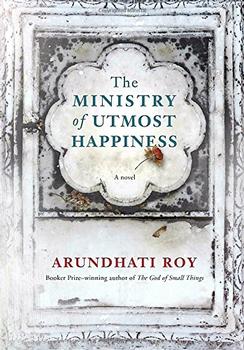 The Kashmir dispute between India and Pakistan occupies center stage in Arundhati Roy's The Ministry of Utmost Happiness. For readers unfamiliar with the dispute here is some background (this piece first ran as the "beyond the book" article for Roy's long awaited book):
The Kashmir dispute between India and Pakistan occupies center stage in Arundhati Roy's The Ministry of Utmost Happiness. For readers unfamiliar with the dispute here is some background (this piece first ran as the "beyond the book" article for Roy's long awaited book):
The conflict in Kashmir traces its roots back to the partition of India and Pakistan (see our Beyond the Book article for An Unrestored Woman).
When the British left India in 1947, Kashmir was not an Indian state, but was instead one of hundreds of smaller independent princely states. each with their own rulers, who swore loyalty to the British empire. As the British Raj withdrew, these princely states had to make the complicated decision as to whether to become a part of either India or Pakistan, or become independent countries. Most that were within contemporary India's borders chose to become a sovereign part of the country.
Kashmir, in India's Northwest, proved to be a particular dilemma. Before we go ahead, a quick geography lesson: Kashmir as we refer to it today is really the state of Jammu and Kashmir. While most of Kashmir has a sizeable Hindu population, Jammu, which includes Ladakh, also has a large proportion of Buddhists. Most people, when they refer to Kashmir, are talking about the "valley" where Muslims form the majority. Srinagar, the capital, is in the valley.
 At the time of Partition, Kashmir was ruled by a Hindu king, Maharaja Hari Singh. Kashmir was a majority Muslim state, which would have made integration with Pakistan (a largely Muslim nation), a logical conclusion, but the king wasn't so sure. Worried about all the waffling, Pakistan decided to play it safe and sent in Muslim tribesmen to cause trouble. As Srinagar was under crisis mode, Pandit Jawaharlal Nehru, India's newly created Prime Minister, sent his own emissary to seal the deal with the king. The move worked and the Raja signed an Instrument of Ascension with India.
At the time of Partition, Kashmir was ruled by a Hindu king, Maharaja Hari Singh. Kashmir was a majority Muslim state, which would have made integration with Pakistan (a largely Muslim nation), a logical conclusion, but the king wasn't so sure. Worried about all the waffling, Pakistan decided to play it safe and sent in Muslim tribesmen to cause trouble. As Srinagar was under crisis mode, Pandit Jawaharlal Nehru, India's newly created Prime Minister, sent his own emissary to seal the deal with the king. The move worked and the Raja signed an Instrument of Ascension with India.
Pakistan (and Kashmir's Muslim majority which mostly wanted to remain independent) was furious, and India and Pakistan fought the first of many wars over Kashmir. Nehru took the case to the UN, which ruled that Pakistan had to withdraw forces, after which India would remove hers, and a free and fair "plebiscite" would determine the fate of Kashmir. Pakistan never complied and, therefore, neither did India. A ceasefire was enforced in 1948 along with a Line of Control (LOC) that grants the majority of Kashmir to India.
Skirmishes and more large-scale fighting have flared up ever since, even as Kashmir was officially included in the Indian Union in the '50s. India's army controls most of the valley with an iron grip. The people of Kashmir themselves have mostly demanded independence from the two countries, their cries drowned out as the subcontinent's superpowers continue to duke it out over God's own country nestled in the foothills of the Himalayas.
This article first ran as the "Beyond the Book" feature for Arundhati Roy's The Ministry of Utmost Happiness. Every time BookBrowse reviews a book we go "beyond the book" to explore a related topic, such as this article by Poornima Apte. Most of these articles are only available to our members, but at any given time, a sampling can be found on our homepage and, from time to time, we reprint one in this blog.